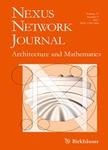版权所有:内蒙古大学图书馆 技术提供:维普资讯• 智图
内蒙古自治区呼和浩特市赛罕区大学西街235号 邮编: 010021

作者机构:Istanbul Bilgi Univ Mimarlik Fak SantralIstanbul KD6 202 TR-34060 Istanbul Turkey
出 版 物:《NEXUS NETWORK JOURNAL》 (建筑与数学杂志)
年 卷 期:2015年第17卷第1期
页 面:311-325页
核心收录:
学科分类:08[工学] 0813[工学-建筑学] 0712[理学-科学技术史(分学科,可授理学、工学、农学、医学学位)] 0812[工学-计算机科学与技术(可授工学、理学学位)]
主 题:Design scripting Dataflow Pedagogical patterns Parametric modeling Visual programming Design education
摘 要:Design scripting is initially based on secondary syntactic mechanisms that control sequential executions of code. This model of computation, called control flow programming, was introduced to designers as the only way of creating algorithms. Dataflow represents a widespread alternative to control flow by utilizing concurrent streams of data. Dataflow programming languages are also considered to be pedagogical tools in fields where the coders are not expert computer programmers. In the last decade, new parametric modeling tools introduced this conception to design scripting, shifting its practical and educational foundations. Dataflow programming represents a promising platform for studying contemporary parametric modeling techniques in design, while architects and designers increasingly use it as their algorithmic sketchbooks. This paper describes a purpose to reflect this shift in design education, pursuing four pedagogical patterns derived from in-class experiments: explication, kit of components, objectification, and re-generation.